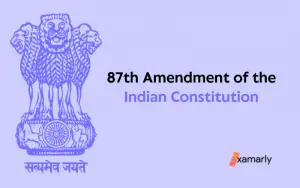Bahlul Lodi laid the foundation of the Lodi Dynasty. From 1451 to the year 1489, he was in power.
The reign of the Lodi dynasty lasted from the year 1451 to 1526. The dynasty is named after an Afghan tribe known as Lodi. This dynasty took over the Sayyid Dynasty. The Lodhi dynasty was the last dynasty that ruled the Sultanate of Delhi.
You are probably wondering Who Was Bahlol Lodhi and what his reign and conquests were? Read on to find your answers and unravel the mysteries of the Old Delhi Sultanate. In this article, we’ll look at his reign, administration, and conquests, and then, we’ll discuss how he became one of the greatest Mughal Rulers of the 13th century.
Who was Bahlul Lodi?
The leader of the Pashtun Lodhi tribe was Bahlul Khan Lodi, who lived from 1401 until 12 July 1489. Following the voluntary deposition of the kingdom by the final emperor of the Sayyid Dynasty, Bahlul Lodi erected the Lodhi Dynasty. On April 19, 1451, Bahlul took over as the dynasty’s ruler.
Malik Bahram Khan Lodi was Bahlul’s grandfather. He was a Pashtun tribal leader of the Lodhi tribe who later joined Malik Mardan Daulat’s administration, the Multan governor. Malik Kala Khan Lodi was the father of Bahlol Khan Lodi.
Bahram has roughly five sons in all. Malik Sultan Shah Lodi, his eldest son, later served under Khizr Khan, the king of the Sayyid dynasty. He made a name for himself by slaying Mallu Iqbal Khan, his fiercest foe, in a battle for which he was given the honorific title of Islam Khan and appointed governor of Sirhind in 1419.
The daughter of Malik Sultan was married to Bahlul. Malik Sultan was the elder brother of Malik Kala Khan Lodi.
When he was younger, Bahlul engaged in the horse trade. He even sold one of his exquisitely bred horses to Sultan Mohammad Shah of the Sayyid dynasty and received a pargana as payment. This earned him a promotion to the rank of amir and later took over as governor of Sirhind upon the passing of Malik Sultan. Lahore was also added to his duty.
The Malwa Sultan Mahmud Shah I once invaded Sultan Muhammad Shah’s land, and Sultan Muhammad Shah requested his assistance. With 20,000 mounted men, Bahlul united with the imperial army. Using his smartness, he convinced them to have defeated the Malwa Sultan’s army, leading Sultan Muhammad Shah to bestow upon him the title of Khan-i-Khanan.
Ascension To The Throne
In 1443, Bahlul made a failed attempt to conquer Delhi. Bahlul once more launched an attempt to seize Delhi in 1447 but it failed. This time under Sultan Alam Shah, the last Sayyid monarch.
One of Alam Shah’s ministers, Hamid Khan, extended an invitation for him to succeed to the throne of Delhi when Alam Shah relocated to Badaun in 1448.
On April 19, 1451, Bahlul Shah took over the kingdom of Delhi and adopted the title Bahlul Shah Ghazi. This happened after Alam Shah willingly step down from the throne. lam Shah remained a resident of Badaun right up until his passing in July 1478.
Click on the linked article to know more about Alam Shah of Sayyid Dynasty.
Reign
Bahlul decided to remove Hamid Khan after taking the throne and thus, Hamid Khan was jailed by Malik Mahmud Khan, the governor of Samana, and Bahlul’s cousin and brother-in-law.
The Sharqi dynasty, situated in Jaunpur, was overthrown and captured by Sultan Bahlul Lodi in 1479. Bahlul expanded his possessions over Jaunpur, Gwalior, and upper Uttar Pradesh. Meanwhile, he made significant efforts to put an end to uprisings and rebellions in his domains. He held Delhi as the seat of his empire, just like the earlier Delhi Sultans.
In 1486, he gave the title of viceroy of Jaunpur to his son, Babrak Shah. This eventually became a problem since his second son, Nizam Khan (Sikandar Lodi), was selected as his heir, and after he passed away in July 1489, there was a power struggle.
Administration
- Under the Turkish Sultans, the monarchy was extremely centralized. The Sultan had unrestricted power.
- However, the monarchy expanded with Afghan power. The Afghan monarchy was mostly of a “tribal” character. The king was “first among equals” in their eyes.
- Political expediency did, in fact, play a part. As an Afghan, Bahlul was unable to rely on Turks for help.
- He was forced to agree to his fellow Afghans’ demands. The Afghan nobility had to have total local control.
- Their only relationship with the Sultan was to facilitate his military force when required.
- He never held an open darbar or stepped on the throne in presence of his fellow Afghan nobility during Bahlul’s reign. He used to call his Afghan nobles as Masnad-i-Ali.
Conquests
Bahlul Lodi led a series of military campaigns against Mewar, Bhogaon, Sambhal, Capri, Gwalior, etc., and forced the leaders to submit submissions and pay annual tributes. Conquering Jaunpur was one of Bahlul’s notable accomplishments.
Mahmud Shah Sharqi, the king of Jaunpur, tied the knot with one of Alam Shah’s daughters. In the first year of Bahlul’s rule, Mahmud Shah made an assault on Delhi but was ultimately repulsed. Bahlul gave Barbak Shah control of the Jaunpur kingdom.
The capture of Jaunpur established his military strength, increased his wealth, and boosted his popularity among the kings which enabled him to force the chiefs of Dholpur, Kalpi, and Alipur to recognize his suzerainty.
In the latter year of his rule, he targeted Gwalior. Bahlul Lodi demonstrated his abilities as a leader. The Lodi dynasty was able to establish itself in the Delhi Sultanate’s history because of its military prowess.
Bahlul Lodi and the Afghan Nobility
The first Afghan sultan of the Delhi Sultanate was Bahlul Lodi. The nobility recognized him as their leader since he created the Lodi dynasty. However, Bahlul meets halfway with the sense of equality and freedom of the Afghans.
He followed the Afghan philosophy of kingship and considered himself solely to be first among equals. Masnad-i-Ali was the name he gave to his nobility.
When they were ill or enraged, he would visit them at their residence. He distributed the loot among them equally. He had no private bodyguards. Every single day, one of the nobles gave him food. One of the Afghan nobles gave him a horse to ride when he wanted.
With his incredibly cordial behavior, Bahlul gained the confidence, support, and gratitude of the Afghan nobles. He bestowed upon them jagirs and high-ranking offices. He thought of them as his friends, and he view himself to be a part of them.
It is said that in a crisis, he wouldn’t think twice about taking off his turban and pleading with his Amirs for pardon, stating “If you find me unworthy of the situation I occupy, you can choose someone else.” The Sultan shied away from displaying his eminence.
Tomb
The Lodhi tomb is a fairly plain square chamber with five domes. The biggest dome is in the center with arched openings on all four sides.
There are Quranic words crafted on the tomb’s arches, yet nothing else is embellished. This modest grave of Bahlul Lodhi is close to the shrine of the famous Sufi saint Nasiruddin-Chirag-e-Delhi, which is situated in the district of Chirag Delhi that bears his name.
Successor
Bahlul Khan Lodi not only accomplished enough for his dynasty. He also paved the road for his son and successor Sikandar Lodhi.
Bahlol Lodi perished in Delhi on July 12th, 1489, and was replaced by his son Sikander Lodi. Sikander Lodi governed the Lodhi Dynasty from 1489 to 1517 CE. From 1451 through 1489, Ibrahim Lodi was in power.
Visit the linked article to learn about Ibrahim Lodhi.
Coins
Coins made of copper and billon were produced after Bahlul Lodi was crowned.
The formula “Al-Mutawakkil,” the name of the issuer, and the mint Dehli are always found on the front of Lodi rulers’ coins, while the date and “Fi Zaman Amir-ul-Muminin Khulidat Khilafatuhu” are always found on the reverse.
Conclusion
Sultan Bahlul Lodi, a skilled general, understood that he needed the help of Afghan lords to take control of the Sultanate of Delhi. The Sultan officially acknowledged that he was not a monarch but rather one of the Afghan lords because the Afghan nobility wanted him to treat them equally.
The Afghan nobility would not be forced to stay in Sultan Bahlol Lodi’s court, nor would he sit on the throne. consequently, the nobles respected him and stood by him during his rule.
FAQs related to Bahlul Lodi
Who founded the Lodi Dynasty in 1451?
Bahlul Lodi formed the Lodhi Dynasty after the last emperor of the Sayyid Dynasty dethroned the kingdom willingly.






